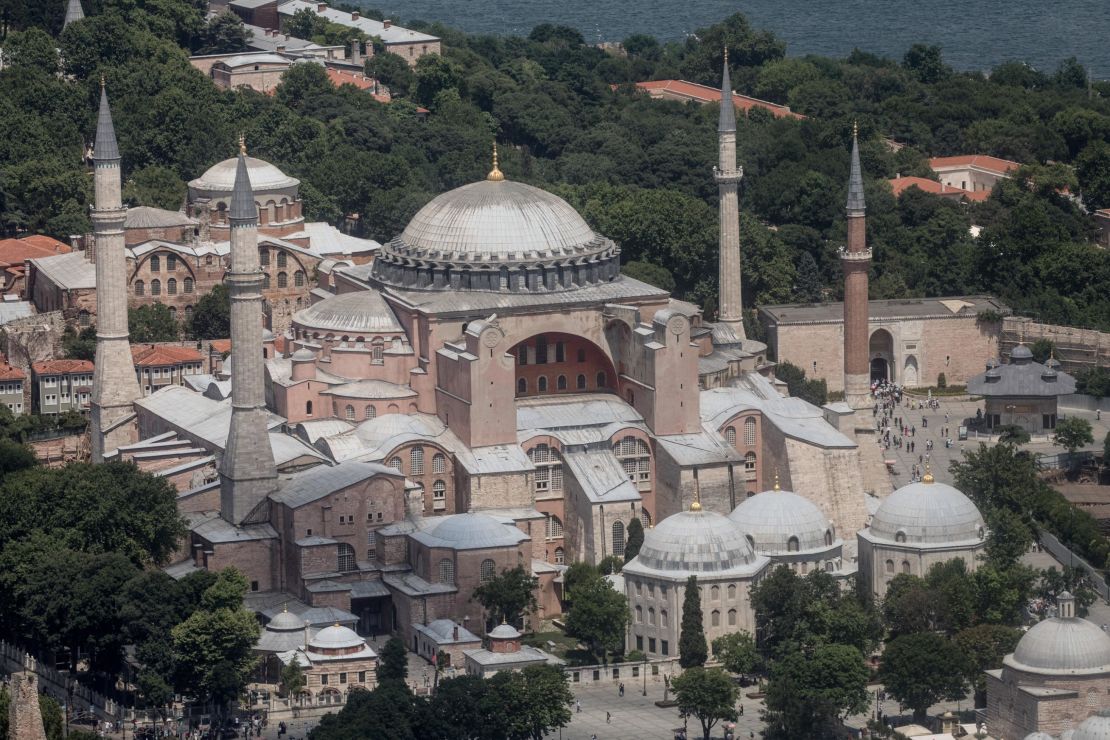Story highlights
Dozens of World Heritage sites are endangered by climate change
By the year 2011 flood risk may rise by 50%, study finds
Pull out your passport and pack your bags for the sunny Mediterranean. But hurry.
You’ve got a lot of traveling to do if you’re going to see some of the historical wonders of the world before climate change further damages them, according to a study published Tuesday in the journal Nature Communications.
Across the Mediterranean region, flood risk may increase by 50% and erosion risk by 13% by the year 2100, the study found, with considerably higher increases at specific World Heritage sites, areas chosen to be preserved due to their importance in human history.
The impact on those historical icons would be significant, the study warned, unless actions are taken quickly.
“Adaptation planning is urgently needed,” said lead author Lena Reimann, a doctoral researcher for the Coastal Risks and Sea-Level Rise Research Group in Germany. “If our common heritage is destroyed or lost, it is not possible to replace or rebuild it.”
There are 1,092 cultural historical sites on the 2018 World Heritage List, which, according to the authors, have “high intangible value as they represent icons of human civilization.”
Because our ancestors often settled near water for both food and commerce, a good many are in coastal areas, especially in the historically rich Mediterranean region. Due to the steep topography of many of the sites clustered along the Mediterranean Sea, most cities, then and now, were built at the water’s edge.

Many of those World Heritage sites are already at risk from rising sea levels. Venice, for example, has been thought to be sinking for years. In reality, Venice floods regularly, and has done so for centuries. In 1996 a combination of rain, high tides and high wind caused the canals to rise a devastating6 feet above normal levels.
That’s today. But little is known about the potential future effects of the flooding and erosion climate change may bring, and that was what this study was designed to address.
The researchers ranked and compared 49 locations facing the highest risk from a total of 159 World Heritage sites lining the Mediterranean Sea. Due to the sheer numbers of historical sites along their coasts, a third of those endangered sites were located in just four countries: Italy (15), Croatia (7), Greece (4) and Tunisia (4).
The study’s design explored the risk of flooding and erosion under four different sea-level rise scenarios until 2100, ranging from no risk to highest risk.
Flooding risk was highest for cities along the northern Adriatic Sea. Some are in severe danger now. Besides Venice and its lagoon, the Italian city of Ferrara and its wetlands of Po Delta and the Patriarchal Basilica of Aquileia at the northern coast of Italy are currently at high risk due to rising sea levels.
To determine future flood risk, the researchers combined flood area and flood depth; they found the flood risk index under the worst-case scenario to increase by up to 50 % until 2100 across the region. The maximum flood depth, they found, may rise by 290% across the region. In Venice, maximum flood depth may be as high as 2.5 meters or 8 feet above normal levels.
The study also looked at the cost of erosion by flood waters and found 42 of the 49 sites were suffering coastal erosion today. Italy contains the most number of sites endangered by erosion, followed by Croatia and Greece.
By 2100, under the highest risk scenario, the Lebanese city of Tyre topped the list of cities endangered by erosion. Tyre is home to one of the largest, well-preserved Roman hippodromes, racecourses used mostly for Roman chariot races.
Tyre was followed by Ephesus, Greece, known for the nearby Temple of Artemis, one of the Seven Wonders of the Ancient World. In equal danger are Heraion, a large temple dedicated to Hera in Samos, Greece, and the Archaeological Ensemble of Tárraco in Spain, said to be the first and oldest Roman settlement on the Iberian Peninsula.
Only two of the 49 sites, the Medina of Tunis and Xanthos-Letoon, appear to be safe from climate change-related flooding and erosion bythe end of the century, the study found.
Grim findings, perhaps, but Reimann and her colleagues hope the information in their report can help galvanize action to protect these unique historical sites from further damage.
“If rigorous climate change mitigation is pursued as planned under the Paris Agreement,” said Reimann, “future increases in flood risk and erosion risk could be kept to a minimum.”
While the World Heritage Coalition monitors each historical site, it’s up to each country to maintain their sites, which includes adaptation to climate change.
Get CNN Health's weekly newsletter
Sign up here to get The Results Are In with Dr. Sanjay Gupta every Tuesday from the CNN Health team.
“However,” said Reimann, “adaptation will be especially challenging in countries with a large number of World Heritage Sites at risk” such as Italy, Croatia and Greece.
Some of those countries also face other concerns, Reimann said, “such as the economic crisis, refugees issues and social conflict” which might interfere with the country’s ability to address the challenges climate change may bring.
In these instances, hopefully the UNESCO World Heritage Convention might be able to support the affected countries, Reimann said.


















